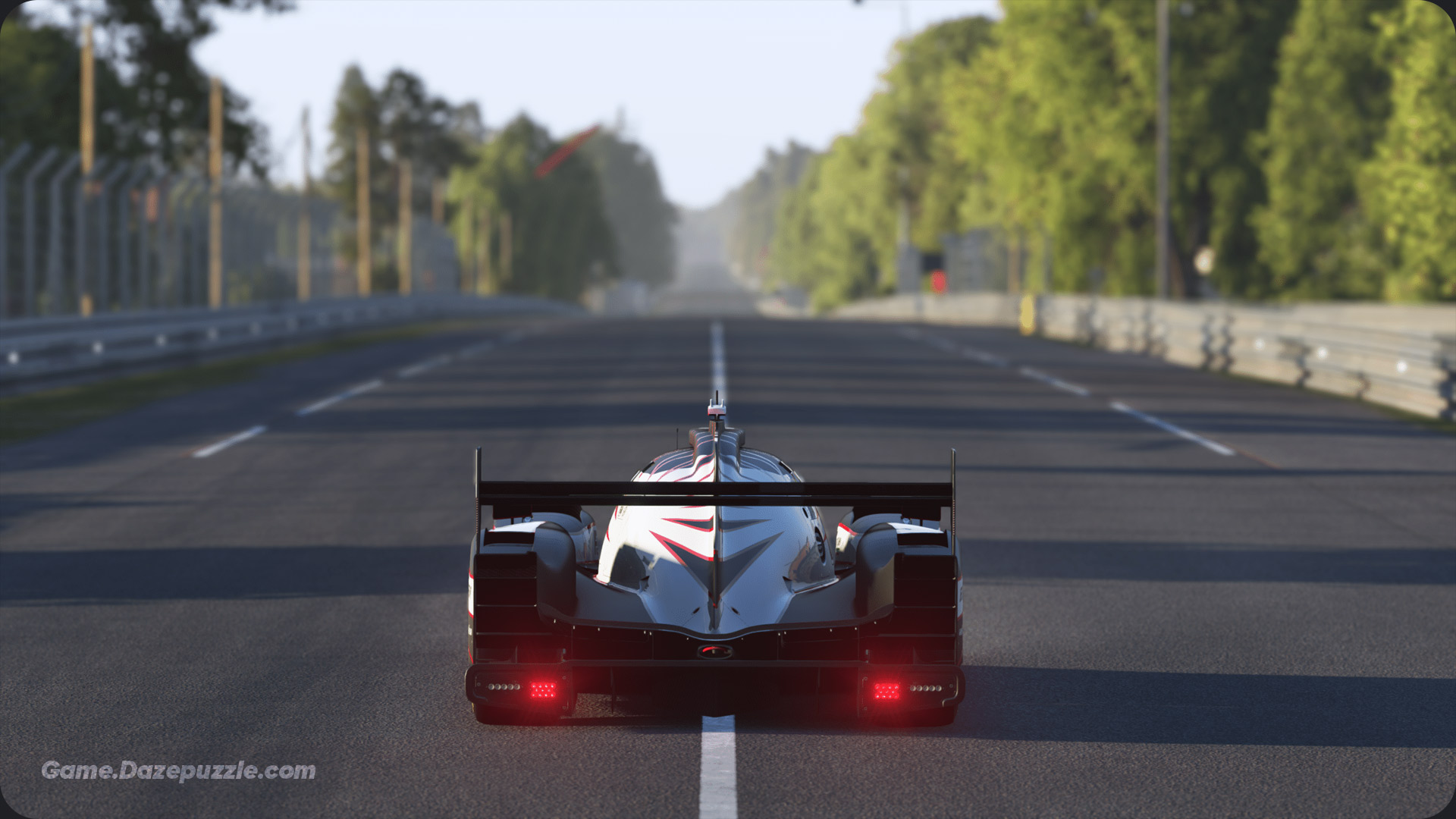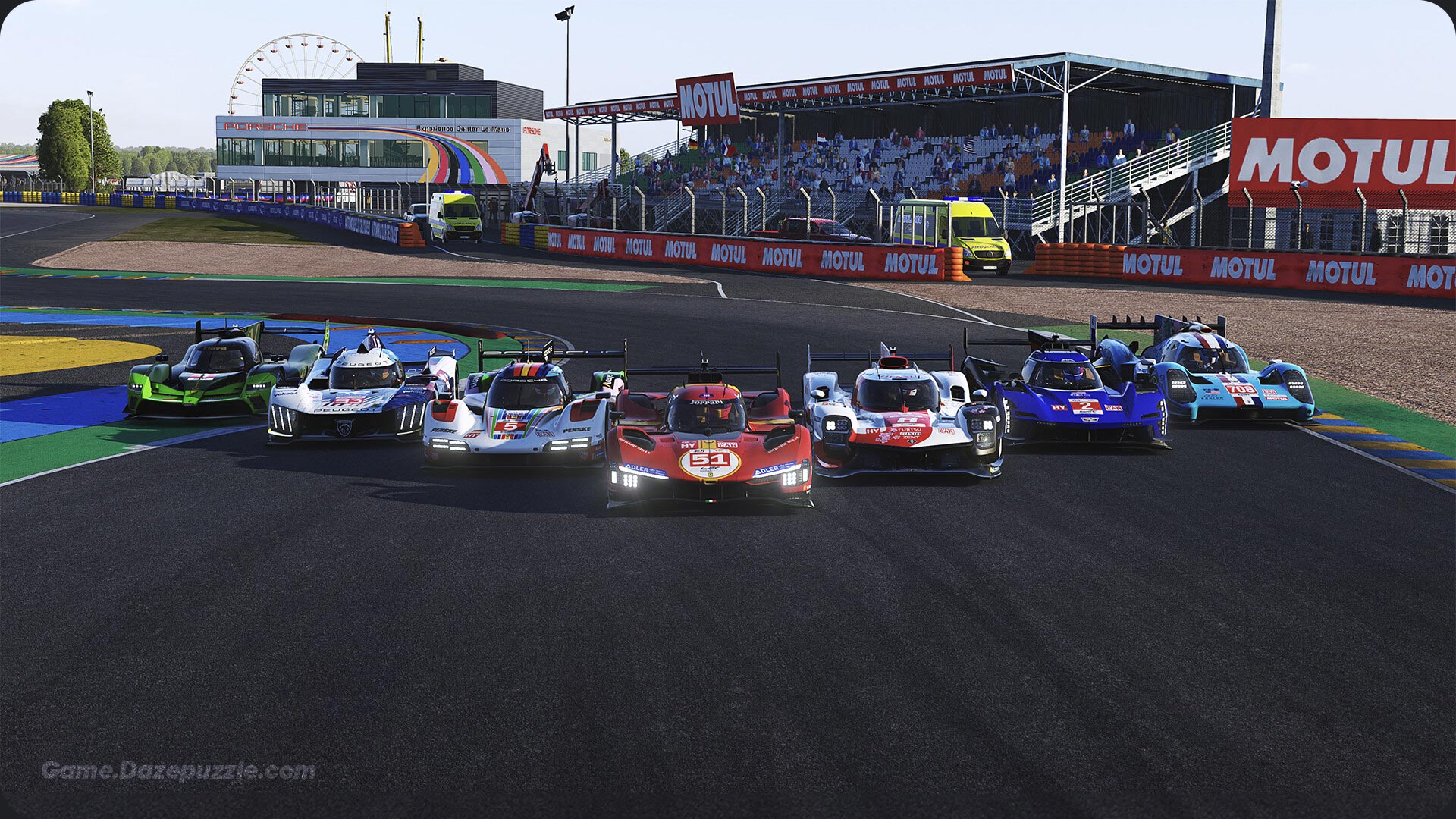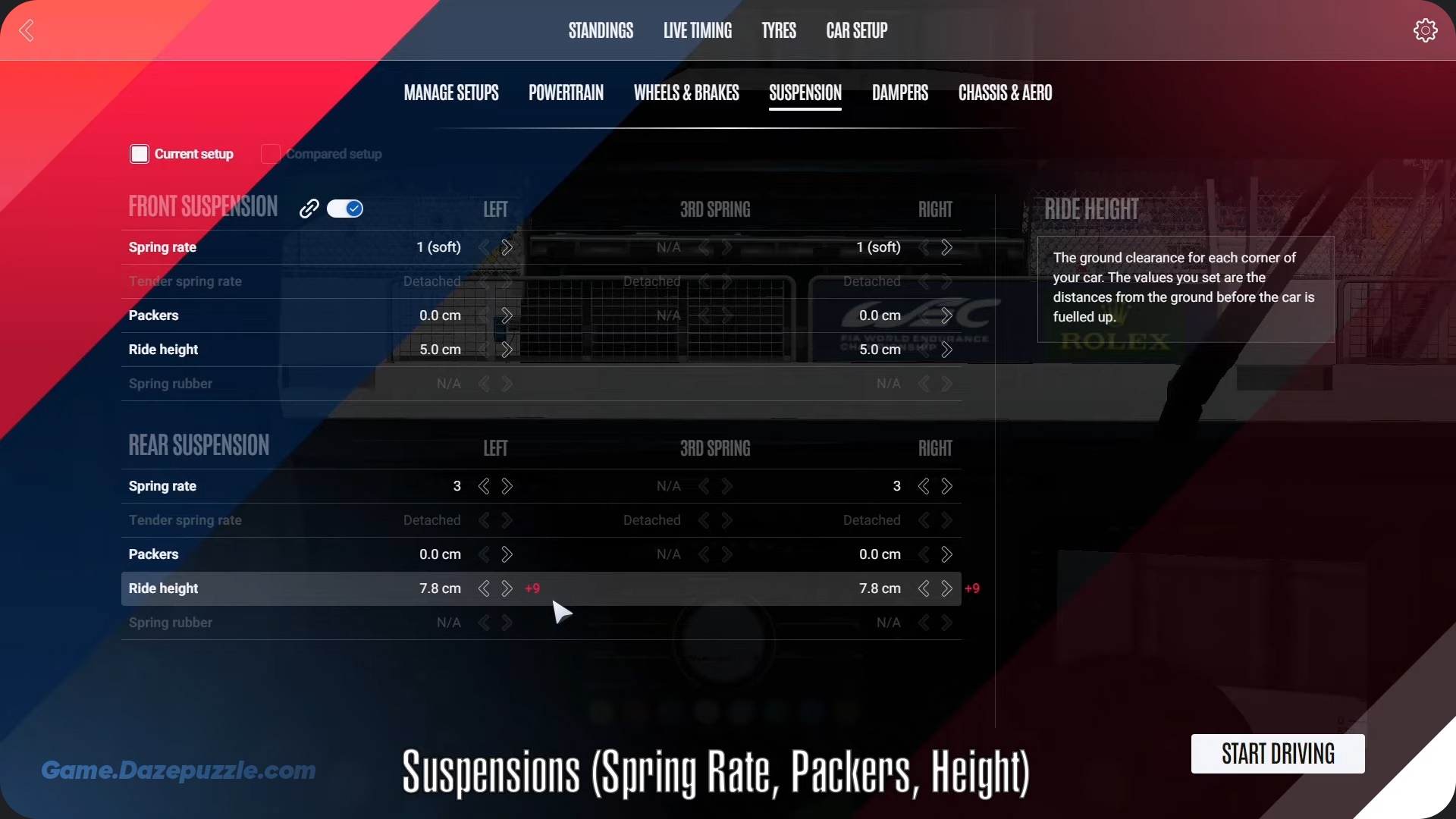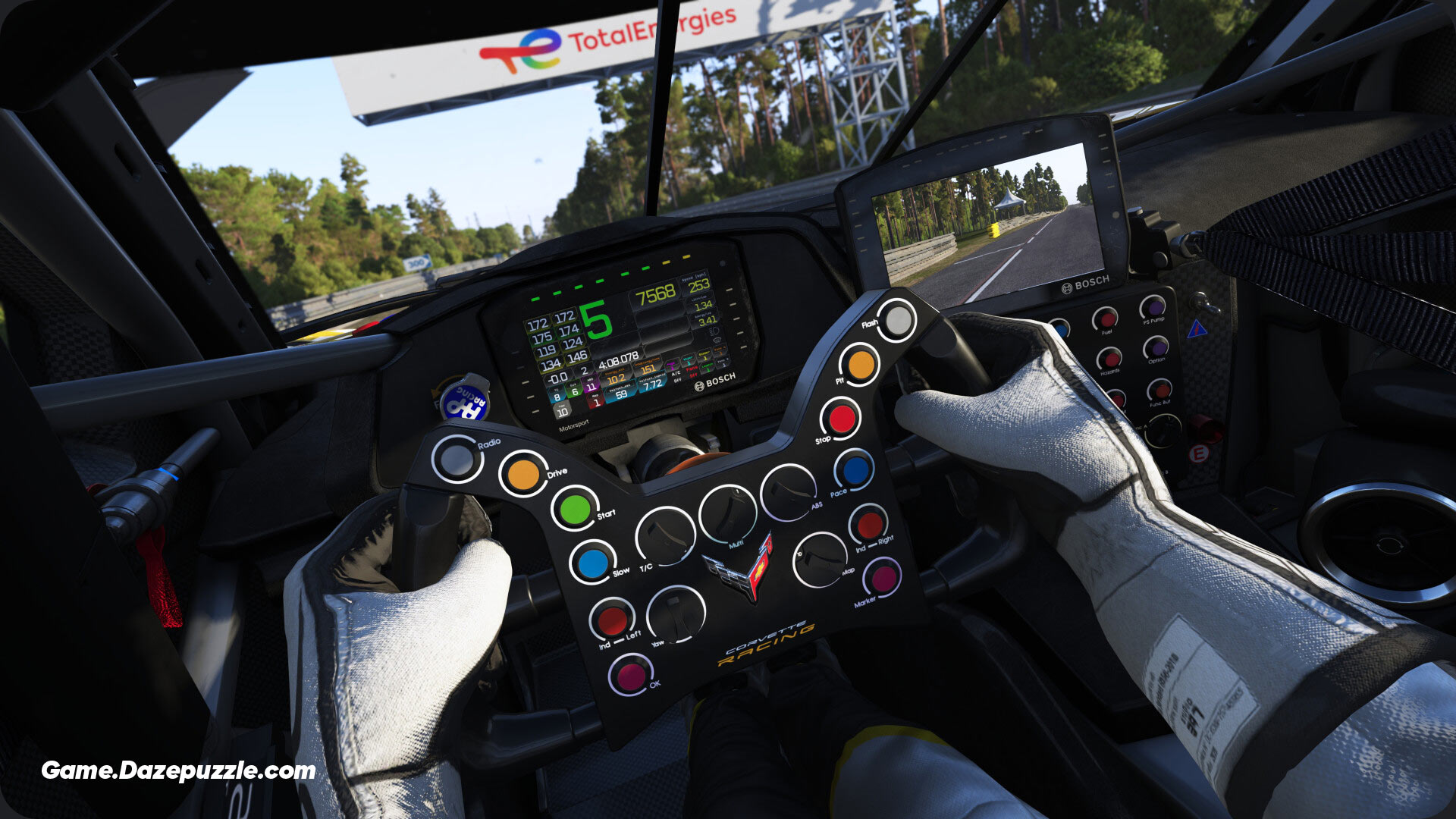The engine screams, the chassis vibrates, and for a split second, everything outside your cockpit blurs into a kaleidoscope of color. This isn’t just another racing game. This is the digital embodiment of the world’s most grueling test of speed and stamina. If you’ve found your way here, you’re likely standing at the threshold of this world, holding the keys to a high downforce beast, and wondering where on earth to begin. You’ve come to the right place.
This is more than just a collection of tips; it’s a complete le mans ultimate guide designed to walk you through every corner, every setup decision, and every strategic call you’ll need to make. We’ll take you from feeling overwhelmed in the menus to feeling perfectly in sync with your machine as you carve through traffic at Spa or Monza. Let’s get started.
What Is in Our Definitive Le Mans Ultimate Guide
Part 1: The Foundation – Understanding Le Mans Ultimate
Before you can conquer the track, you need to understand the machine. And in this case, the “machine” is the game itself. This section covers the absolute essentials, from the game’s DNA to the critical first steps every driver must take.

What Exactly Is Le Mans Ultimate?
Le Mans Ultimate (LMU) is the official game of the FIA World Endurance Championship (WEC), developed by the simulation veterans at Studio 397. At its core, LMU is built on the legendary physics engine of rFactor 2 (rF2), a simulator famous in the sim racing community for its incredibly realistic vehicle dynamics, detailed force feedback, and a dynamic track surface system called “RealRoad” that evolves realistically over a race weekend.
Think of LMU as a refined and focused version of rF2. It takes that hardcore, beloved physics engine and packages it into a more modern, accessible experience. It solves one of rF2’s biggest hurdles: the scattered content and high cost of entry. Here, you get all the official cars and tracks of the WEC season in one place. This heritage is LMU’s greatest strength.
The way the cars feel, the way the tires connect to the tarmac it’s all world class. However, it’s also important to know that the game launched in “Early Access” and is still evolving, meaning some features like a full single player career mode are planned for the future. Understanding this context helps you appreciate its brilliant core (the driving) while managing expectations for its surrounding features.
Getting Started: System Requirements & Initial Setup
Let’s get the technical bits out of the way. You don’t need a supercomputer, but LMU can be demanding, especially with a full grid of cars.
Official System Specs:
- Minimum:
- CPU: Intel Core i5-4460 or AMD FX-8120
- RAM: 8 GB
- GPU: nVidia GeForce GTX 950 or AMD Radeon RX 470
- Recommended:
- CPU: Intel Core i5-9600 or AMD Ryzen 5 3600X
- RAM: 16 GB
- GPU: GeForce GTX 1070 8 GB or Radeon RX 580 8GB
Beyond the official specs, real world performance shows that LMU is very CPU heavy, especially in multi class races with lots of AI cars. The game has to calculate complex physics for every single car on track, which puts a huge load on your processor. This can cause stuttering even with a powerful graphics card. If you’re looking to upgrade, a modern, powerful CPU will often give you a bigger performance boost in LMU than a top tier GPU. A key setting to adjust for performance is “Visible Vehicles.” Lowering this can significantly improve your frame rate.
The All Important Force Feedback (FFB) Masterclass
Force feedback is your connection to the car and the road. Getting it right is non negotiable. LMU’s FFB is powerful and detailed, but it might need some tuning.
The 5-Minute Setup (Beginner)
Start with the in-game settings. A great first step is to reduce the jarring effects of curbs by setting “Curb vibration strength” and “Curb pull strength” to 0%. This lets you feel the chassis’s reaction to the curb, not an artificial shake. Set “FFB smoothing” to a low value (around 5-10) to get more detail. If you have a Thrustmaster wheel, you’ll likely need to check the “Invert FFB” box.
Brand Specific Tweaks (Intermediate)
For popular wheels from Fanatec, Logitech, and Thrustmaster, there are many community tested settings available. The most important slider is “Steering Torque Capability.” You should set this to match the maximum torque output (in Nm) of your specific wheel base. This ensures the game’s FFB signal isn’t “clipping” (losing detail at peak forces).
The Pro Level Path (Advanced)
For direct drive wheel users seeking the purest feel, you can edit the DirectInput.json file in your game directory. This allows you to bypass some of the game’s built-in filters, giving you a raw, unfiltered signal from the physics engine. It’s the ultimate in FFB fidelity but requires a bit of tinkering.
Navigating the Cockpit: UI, HUD, and MFD Explained
LMU’s interface is clean but packed with information. Knowing what you’re looking at is crucial.
- The HUD (Head Up Display): This is your at a glance info panel.
- Standings: Shows the positions within your specific car class, not the overall race.
- Delta Timer: Shows your current lap time relative to your best lap. Green means you’re faster, red means you’re slower.
- Track Map: Essential for multi class racing to see faster or slower cars approaching.
- Car Telemetry: This is the most critical part. It displays tire and brake temperatures (blue is cold, green is optimal, red is hot), fuel level, and for Hypercars, the hybrid battery charge.
- The MFD (Multi Function Display): This is your in-car engineer. You can cycle through its pages to see relative timings to other cars, check tire wear, monitor fuel consumption, and, most importantly, plan your pit stops. A pro tip: right clicking on the MFD options often changes values in larger increments, which is great for quick adjustments.
Part 2: The Garage – Cars & Circuits
Now for the fun part: the hardware. This is your complete guide to every car you can drive and every track you can drive it on.
The WEC Roster: A Complete Car Guide
The biggest learning curve in LMU isn’t mastering one car; it’s understanding the unique demands of each class. Each one is its own discipline.
The Hypercar Challenge
This is the top tier, the pinnacle of endurance racing. These cars are a complex dance of immense downforce, raw power, and sophisticated hybrid systems. The main challenge here is managing that hybrid energy and surviving the opening laps on cold tires without any ABS to save you. They are brutally fast but demand respect.

The LMP2 Proving Ground
The Le Mans Prototype 2 class is often called the perfect training ground for endurance racing. Because all teams use the same ORECA 07 chassis, it’s a pure test of driver skill, car setup, and race strategy. These cars have significant downforce but are tricky under braking, requiring a delicate touch to avoid locking the wheels.
The Accessible LMGT3 Battle
Replacing the old GTE class, the LMGT3 cars are based on familiar road going supercars. With features like ABS and more forgiving handling, this is the ideal class for beginners. However, mastery requires a deep understanding of its unique tire model and how to manage wear over a long stint.
| Class | Car | Engine | Key Strengths | Key Weaknesses | Beginner Friendliness (1-5) |
|---|---|---|---|---|---|
| Hypercar | Ferrari 499P | Hybrid | Great low speed performance, aggressive nature | Needs a precise balance at high speed | 3 |
| Hypercar | Porsche 963 | Hybrid | Fast in high speed corners, stable | Slightly less outright pace | 4 |
| Hypercar | Cadillac V-Series.R | Hybrid | Stiff chassis, direct response | Easy to lock the brakes | 3 |
| Hypercar | Peugeot 9X8 (2023) | Hybrid | Good balance, strong front-end | Understeers at high speed | 3 |
| Hypercar | Toyota GR010-Hybrid | Hybrid | Very strong front-end, good overall balance | Poor traction, unstable rear | 4 |
| Hypercar | Glickenhaus SCG 007 | Non-Hybrid | Responds well to trail braking | Poor traction, inherent understeer | 2 |
| Hypercar | Vanwall Vandervell 680 | Non-Hybrid | Long gears for straight line speed | Extremely difficult to control the rear | 1 |
| LMP2 | ORECA 07 Gibson | Naturally Aspirated V8 | A pure test of driver skill | Difficult and sensitive on the brakes | 3 |
| LMGT3 | BMW M4 GT3 | Turbocharged I6 | One of the easiest cars to drive | Lower skill ceiling | 5 |
| LMGT3 | Ferrari 296 GT3 | Turbocharged V6 | Agile and sharp, great all rounder | Twitchy rear end needs careful control | 3 |
| LMGT3 | Porsche 911 GT3 R | Naturally Aspirated Flat-6 | Stable and predictable | Can feel a bit numb to some | 4 |
| LMGT3 | Aston Martin Vantage | Turbocharged V8 | Stable chassis, a solid starting point | May lack excitement for some drivers | 4 |
| LMGT3 | Ford Mustang GT3 | Naturally Aspirated V8 | Very competitive, stable and fast | Can be a bit of a boat in slow corners | 5 |
| GTE | Ferrari 488 GTE Evo | Turbocharged V8 | Good, stable default setup | (Legacy Class) | 4 |
| GTE | Porsche 911 RSR-19 | Naturally Aspirated Flat-6 | A fan favorite, beautifully balanced | (Legacy Class) | 3 |
The World’s Greatest Circuits: A Track by Track Guide
LMU features the full calendar of the 2023 FIA WEC season, with more tracks being added. Each one is a unique challenge.
Autódromo Internacional do Algarve (Portimão), Portugal
A modern “rollercoaster” of a track, famous for its massive elevation changes and blind corners.
Sebring International Raceway, USA
America’s oldest road course, infamous for its incredibly bumpy, punishing concrete surface that tests suspension and driver focus to the absolute limit.
Circuit de Spa Francorchamps, Belgium
Home to legendary corners like Eau Rouge and Raidillon. LMU is the only sim to feature the latest layout after its recent multi million euro renovation.
Circuit de la Sarthe (Le Mans), France
The heart and soul of endurance racing. A colossal track that blends public roads with a permanent circuit, defined by its monstrously long straights and iconic chicanes.
Autodromo Nazionale Monza, Italy
The “Temple of Speed.” A simple layout of long straights and heavy braking zones that pushes cars to their top speed.
Fuji Speedway, Japan
Nestled in the foothills of Mount Fuji, this track features one of the longest straights in motorsport, which flows into a technical, twisty final sector.
Bahrain International Circuit, Bahrain
A modern desert track that often hosts night races. The abrasive surface makes tire management a key challenge.
Part 3: The Engineer’s Handbook – Mastering Car Setups
Welcome to the most technical part of this guide. The setup screen can be intimidating, but we’re going to demystify it. A good setup doesn’t just make you faster; it makes the car predictable and gives you the confidence to push.
The Setup Philosophy: A Method to the Madness
The golden rule of car setups is: change one thing at a time. Drive a few consistent laps, identify a single problem (e.g., “the car won’t turn on corner entry”), make one adjustment, and then test again. Don’t just copy a setup you found online; understand why it works. The goal is to fix handling problems like understeer (the car doesn’t want to turn, and the front tires slide wide) and oversteer (the rear of the car wants to spin out).

A critical piece of information inherited from rF2 is the LMU setup “meta.” In this physics engine, running the minimum possible tire pressures and lower camber angles is almost always the fastest approach, which might contradict what you’ve learned in other sims.
Aero vs. Mechanical Grip: The Fundamental Trade-Off
This is the balance between cornering speed and straight line speed.
Wings
Higher wing angles create more downforce, pushing the car onto the track for more grip in medium to high speed corners. The trade-off is increased drag, which slows you down on the straights. For tracks like Monza or Le Mans, you’ll want lower wing angles. For twisty tracks, you’ll want more.
Ride Height & Rake
Lowering the car’s ride height lowers its center of gravity, improving stability. However, go too low, and the car’s floor will hit the track on bumps (“bottoming out”). Rake is when the rear ride height is higher than the front, which can help increase front-end grip.
Suspension Geometry & Dynamics
This is where you fine tune how the car handles bumps and transfers weight.
Springs
Stiffer springs provide a more responsive feel but can lose grip on bumpy surfaces. Softer springs are better for bumpier tracks like Sebring.
Dampers (Bump/Rebound)
Dampers control how quickly the springs compress and expand. They are split into “slow” and “fast” settings. Slow damping affects driver inputs (steering, braking), while fast damping affects track inputs (curbs, bumps).
Anti Roll Bars (ARBs)
This is your primary tool for balancing understeer and oversteer. Stiffening the front ARB increases understeer. Stiffening the rear ARB increases oversteer. It’s the first place you should look to adjust the car’s fundamental balance.
Camber & Toe
Camber is the vertical angle of the tires. Negative camber (top of the tire tilted inwards) increases cornering grip but can hurt braking and acceleration. Toe is the horizontal angle of the tires. A little “toe out” on the front can make the car turn in more sharply.
| Common Problem | Primary Solution | Secondary Solution | LMU/rF2 Meta Tip |
|---|---|---|---|
| Understeer on Corner Entry | Soften Front Anti-Roll Bar | Reduce Front Negative Camber | Before making big changes, ensure your tire pressures are at their minimum setting. |
| Oversteer on Corner Entry | Stiffen Front Anti-Roll Bar | Move Brake Bias Forward | In Hypercars, avoid a full hybrid battery, as it can suddenly alter brake balance. |
| Understeer on Corner Exit | Stiffen Rear Anti-Roll Bar | Soften Front Springs | Lowering the differential ‘Power’ lock setting can help the car rotate. |
| Oversteer on Corner Exit | Soften Rear Anti-Roll Bar | Increase Rear Wing Angle | Adjust your Traction Control (TC) settings to better manage power delivery. |
| Unstable Braking | Move Brake Bias Forward | Increase Differential ‘Coast’ lock | Lower the overall Brake Pressure to prevent locking up in the first place. |
| Sluggish Car Response | Stiffen Springs | Stiffen Slow Bump Dampers | Going too stiff can cause the car to skip over bumps, losing grip entirely. |
Part 4: The Driver’s Seat – Racecraft & Strategy
A perfect car is useless without a skilled driver and a smart strategy. This section moves from the garage to the cockpit, focusing on the mental and strategic side of endurance racing.
The Art of a Hot Lap vs. The Science of a Stint
Anyone can push for one fast lap. An endurance champion can string together 30 fast, mistake free laps. The key is to shift your mindset from all out attack to finding a sustainable, consistent rhythm. Focus on smooth inputs. LMU’s physics are sensitive; aggressive, jerky movements with the wheel or pedals will upset the car. Master advanced techniques like trail braking (gradually easing off the brake as you turn into a corner), which is vital for rotating the non ABS Hypercar and LMP2 machines.

The Endurance Mindset: Managing Fuel and Tires
This is the core of endurance strategy. In LMU, tire strategy is dictated by temperature, not just wear.
Tire Strategy: Temperature is King Unlike in F1 style strategy, where you choose a tire based on its lifespan, in WEC (and LMU), you choose a tire based on the track temperature. Using a compound outside its optimal temperature window will result in a catastrophic loss of grip, making the car undriveable, no matter how fresh the tires are. The soft tire is for cold nights, the medium is the all rounder, and the hard is for the hottest part of the day. The first question isn’t “How long will this tire last?” but “Which tire will work in these conditions?”
| Tire Compound | Optimal Track Temp Range | Relative 1-Lap Pace | Relative Durability | Key Application |
|---|---|---|---|---|
| Soft | 0°C – 15°C | High | Low | Qualifying, cool night stints |
| Medium | 15°C – 40°C | Medium | Medium | The workhorse tire for most race conditions |
| Hard | Above 40°C | Low | High | Hottest hours of the day, very abrasive tracks |
| Wet | Wet Track | Very Low (in dry) | Very Low (in dry) | Rain or damp track sections |
Fuel Strategy and Calculation
You can plan your pit stops by using the fuel consumption data on your MFD (shown in Liters per Lap). Learn fuel saving techniques like “lift and coast” (lifting off the throttle before the braking point and coasting into the corner) and short shifting (shifting to a higher gear earlier than normal). This can save you a full pit stop over a long race.
The Hypercar Puzzle: Taming the Hybrid System
This is easily the most complex system in the game. The hybrid system is not a “push to pass” button for a simple power boost. Its primary goals are to improve fuel efficiency and, more importantly, provide consistent braking performance through energy regeneration.
If you mismanage the battery and it hits 100% charge under braking, the regeneration system (MGU-K) stops working. This instantly removes its braking effect, dramatically shifting the car’s brake balance to the rear and often causing a sudden spin. The core gameplay loop is to keep the battery charge between 1% and 99% at all times. You use engine “Motor Maps” to deploy energy on the straights and adjust “Regen” settings to harvest it back under braking, all while maintaining that stable battery level.
The Multi Class Dance: Online Race Etiquette
Racing with different classes on track at the same time is chaotic and beautiful. It requires a unique set of skills and rules.
The Golden Rule
Be predictable, be patient, and respect the other classes.
Slower Class Responsibility (GT/LMP2)
Hold your racing line. Do not make a sudden move to “get out of the way.” A predictable slower car is a safe slower car. Be aware of the massive closing speed of the prototypes in your mirrors.
Faster Class Responsibility (Hypercar/LMP2)
It is your responsibility to make a safe pass. Do not “dive bomb” into a corner. Signal your intentions early. Understand that the slower car is in its own race and is not obligated to give up a corner, especially if they are battling another car in their class.
Part 5: The Paddock – Online Ecosystem & Community
This final section looks at LMU’s competitive online environment and where the game is headed.
Understanding RaceControl: Your Competitive Journey
RaceControl is LMU’s online matchmaking system. It’s built on two key metrics:
- Driver Rank (DR): An Elo based system that reflects your race results. Beating higher ranked drivers gives you more points.
- Safety Rank (SR): The key to unlocking higher level events. You need a Silver rank for intermediate races and a Gold rank for advanced ones.
The “Clean Lap” Meta for Ranking Up
The Safety Rank system is heavily focused on completing “clean laps” without going off track. It punishes track limit violations almost as much, if not more, than collisions. This forces new players into a “consistency over raw speed” mindset. To rank up, your number one priority should be keeping the car within the white lines. The online experience is vastly different between the chaotic rookie lobbies and the much cleaner, more respectful Silver+ lobbies. Your first goal is to race cleanly and escape the rookie tier.

The State of the Game and What’s Next
In its current state, Le Mans Ultimate is a phenomenal driving simulator but an incomplete racing game. The physics, force feedback, sound design, and online racing (in the higher ranked lobbies) are absolutely top tier. Its biggest weakness is the lack of deep single player modes like a career or championship.
The developers have a public roadmap of features to come, including:
- Co-op / Driver Swaps for true team endurance events.
- Dedicated servers for private leagues.
- Full race rules, including Safety Car and Full Course Yellows.
- The highly anticipated Career Mode.
Final Lap
Le Mans Ultimate has laid a rock solid foundation. It’s an essential purchase for dedicated online sim racers who can look past the current lack of single player content. If you’re a solo player, you might want to wait for future updates. But the potential here is immense. If the developers deliver on their promises, LMU is on track to become one of the all time great racing simulators. Now, stop reading. Go drive.
Thanks for keeping up with Game.Dazepuzzle.com






